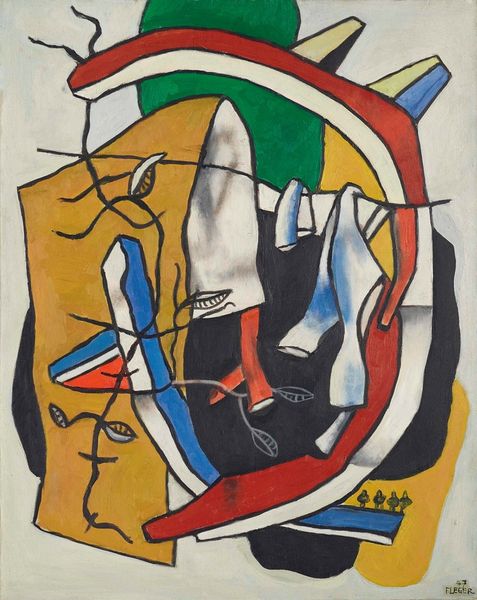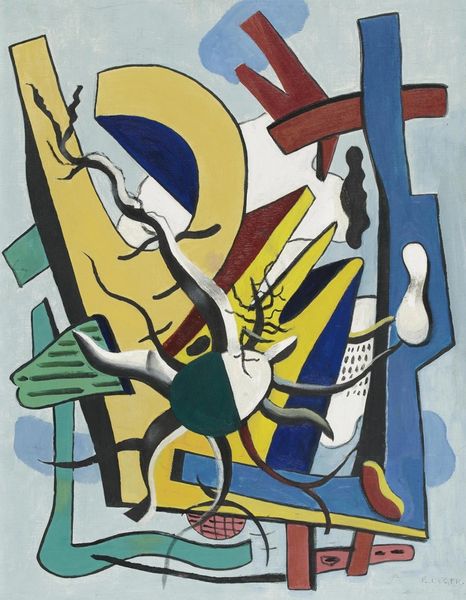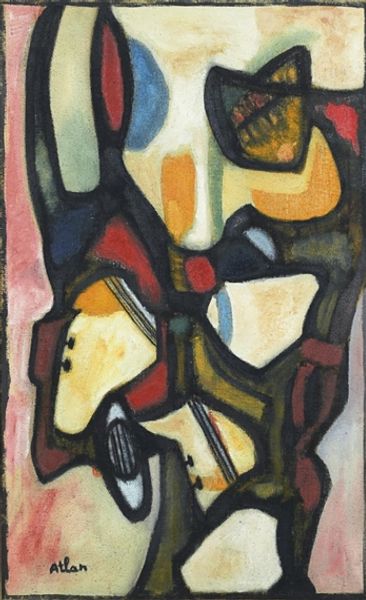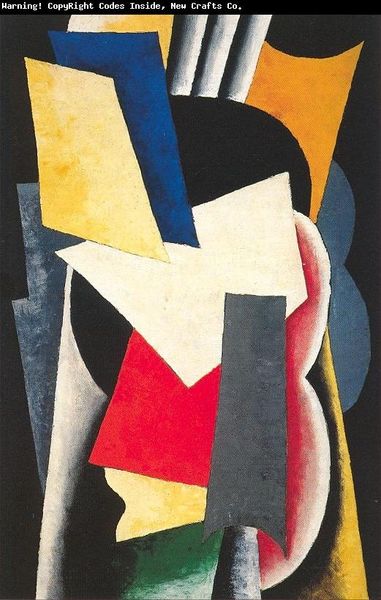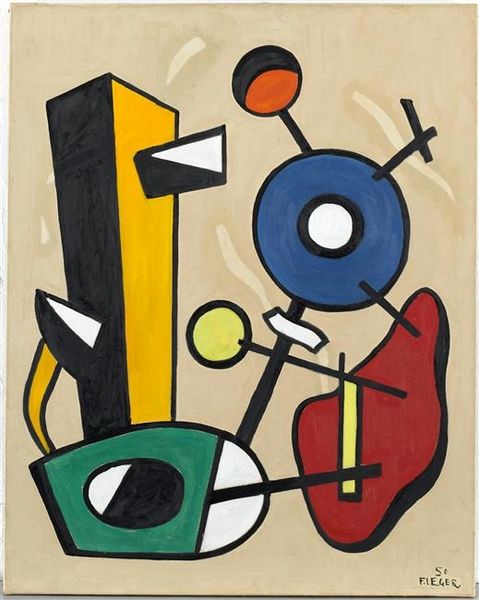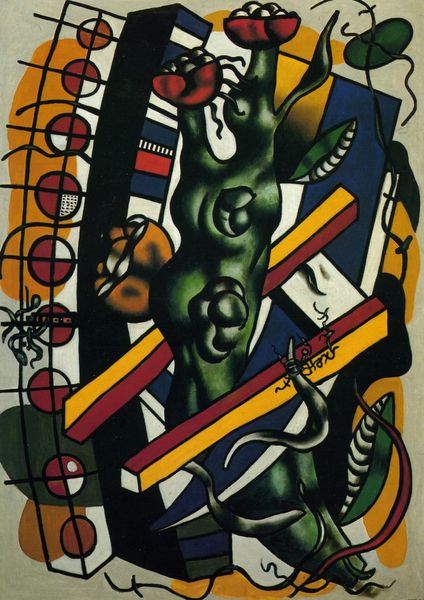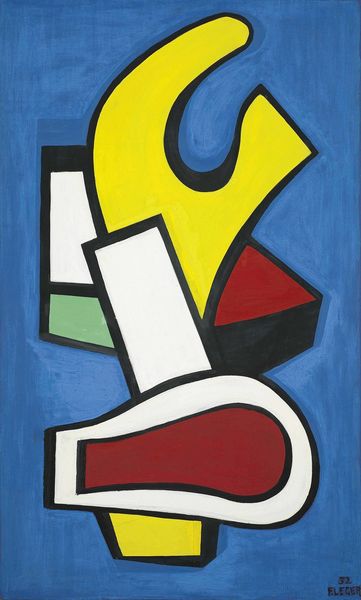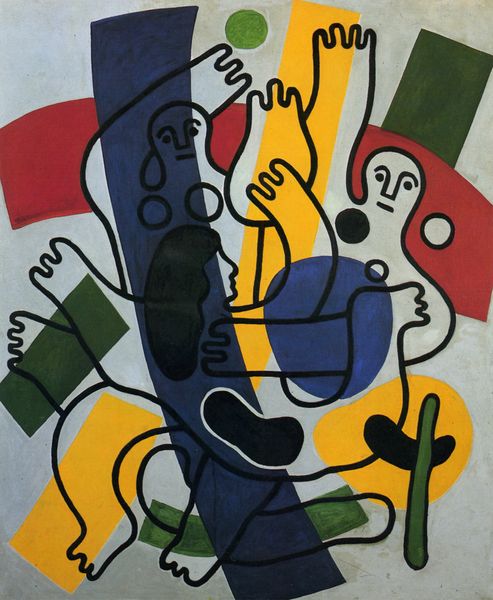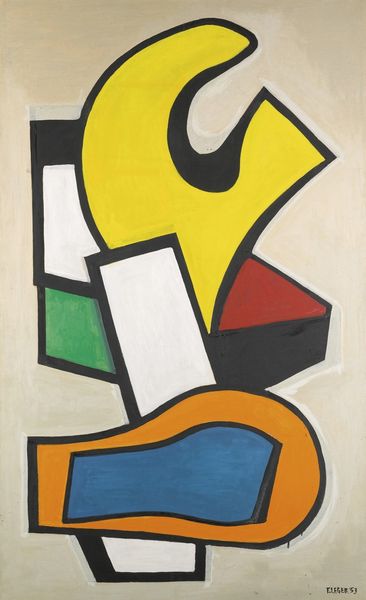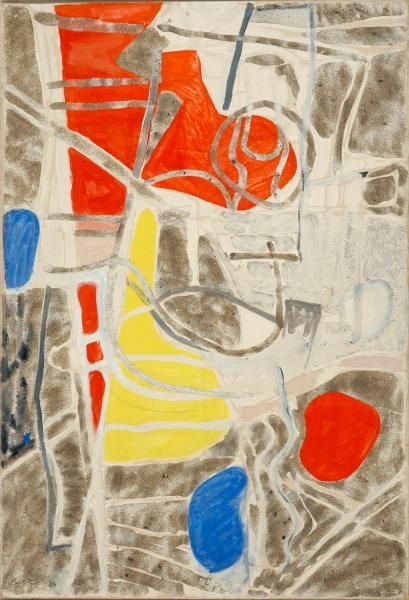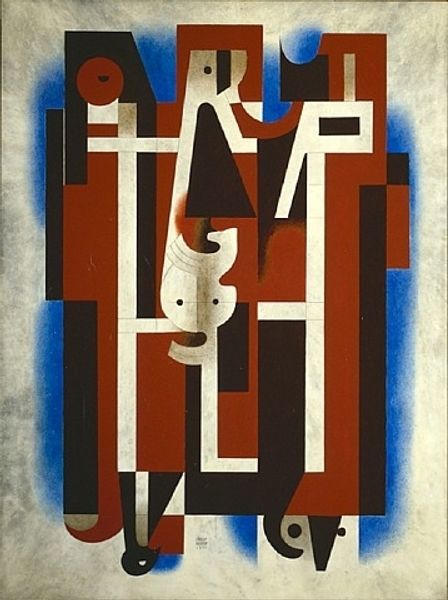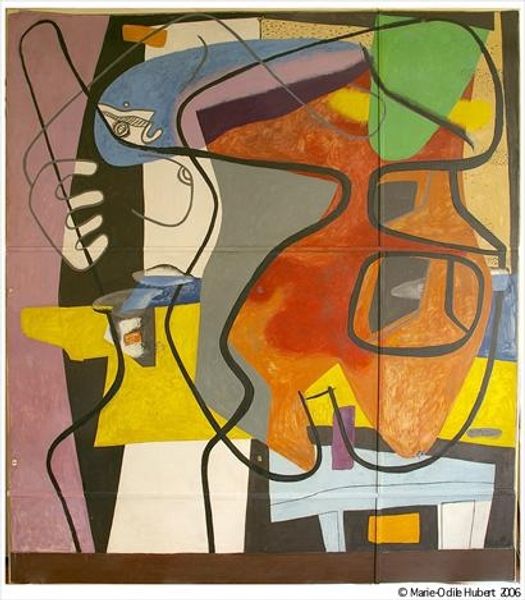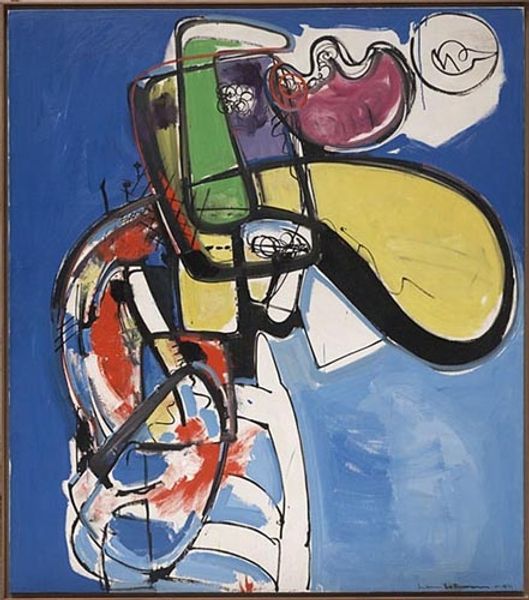
painting
#
portrait
#
art-deco
#
cubism
#
painting
#
abstract
#
geometric
#
abstraction
#
portrait art
Copyright: Public Domain: Artvee
Curator: Editor: Okay, next up we have "Le Paradis Terrestre" by Georges Valmier, painted in 1930. It's a striking abstract piece, lots of geometric shapes and these somewhat disjointed figures. I'm initially struck by the division in the composition; it feels like it’s presenting opposing ideas. What do you see in this work? Curator: It’s interesting that you key in on that division. The title, "Terrestrial Paradise," already sets up a complex dichotomy, doesn’t it? Consider that Valmier created this in the interwar period, a time of massive social and political upheaval. What do you make of the fragmented figures? Does that tell us something about the concept of "paradise" being explored here? Editor: Hmm, well the figures aren’t whole, and they're in a kind of constructed space, so maybe it's not a traditional paradise, not this idyllic natural scene. Is he suggesting paradise is manufactured or broken in some way? Curator: Exactly. The harsh lines and juxtaposed colors clash against any notion of harmony we might expect from a "paradise." What about the style? The clear cubist and art deco influence - how might that affect our understanding of the work’s meaning in terms of gender? Editor: I didn't initially consider that. I guess, the art deco elements bring a kind of luxury feel, yet the geometric shapes push back on any organic sense. Maybe the women of the era were being celebrated visually but still placed in constrained structures? Curator: That’s insightful. The flattening of form, a feature of Cubism, and the geometric containment associated with Art Deco can be read as commentaries on the limitations imposed on the female form. Valmier, through these stylistic choices, places his work within a broader dialogue about women’s roles in the rapidly modernizing world. It reveals tensions embedded within this so called “paradise.” Editor: So, it’s not simply an abstract composition, but almost a critical analysis of the concept of paradise itself, viewed through a very specific socio-historical lens! That really reframes how I see it. Curator: Precisely! By examining art’s historical context and linking it to critical theory, we see how artworks can reflect and shape discussions about gender, identity, and power. There is so much to unpack, so little time.
Comments
No comments
Be the first to comment and join the conversation on the ultimate creative platform.
